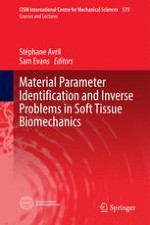2017 | OriginalPaper | Chapter
6. Soft Tissue Finite Element Modeling and Calibration of the Material Properties in the Context of Computer-Assisted Medical Interventions
Author : Yohan Payan
Published in: Material Parameter Identification and Inverse Problems in Soft Tissue Biomechanics
Publisher: Springer International Publishing
Activate our intelligent search to find suitable subject content or patents.
Select sections of text to find matching patents with Artificial Intelligence. powered by
Select sections of text to find additional relevant content using AI-assisted search. powered by
